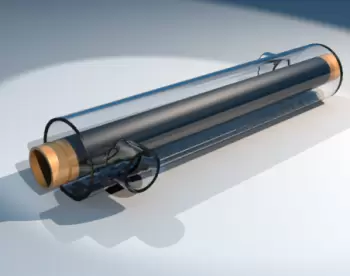
In physics, a diathermic wall separating two closed systems allows heat energy exchange but isolates the mass transfer system. Thus, a diathermic process can occur if a system has an exchange of thermal energy (heat) without the transfer of matter.
This concept implies that the thermal interaction can only be by thermal conduction or radiation.
According to the diathermic wall meaning, only a closed system is possible.
Transferring thermal energy by convection is impossible because it would imply an exchange of matter.
A diathermic process can also be understood as isothermal, which means the transfer occurs at a constant temperature.
What is the difference between an adiabatic and a diametric wall?
The difference between these two walls is that the adiabatic wall does not allow heat transfer, while the diametric wall does.
Between walls impermeable to matter, diathermic and adiabatic walls are opposite.
Why are diathermic walls important?
The diathermic wall is necessary because when we refer to an insulator, we assume that mass exchange or heat transfer is impossible.
However, the diathermic wall that isolates a system only means that the system does not exchange matter. This concept is widespread in our everyday life, as shown in the following examples.
Examples of diathermic walls
Here are some examples from day to day to better understand this concept:
-
For example, a soccer ball is considered diathermic because the air inside it can change temperature but does not mix with the outside air.
-
The house window exchanges energy in the form of heat but does not allow the passage of particles when closed.
-
A closed water bottle can only exchange heat with its outside by thermal conduction.
-
The heat exchanger of a thermal solar energy installation. In these devices, two fluids at different temperatures are in thermal contact with each other, but they must not mix between them. As a result, the heat flows throw a separator acting as a diathermic wall because it does not allow the transfer of matter.
-
A pressure cooker absorbs heat from the kitchen, increasing the internal energy of its content. However, since the steam is not allowed to escape, there is no transfer of matter.
In contrast, human beings are not diathermic systems. Therefore, we are excluded because we exchange energy with our environment and, at the same time, there is an exchange of matter (food, air, sweat, etc.).
How is heat transferred?
Heat transfer through a thermodynamic wall can be accomplished by conduction, transmission, and radiation:
-
Thermal conduction occurs when two elements at different temperatures are in direct contact. If the elements are gases or liquids, this possibility can only happen if there is a diathermic wall that separates them.
-
The motion of the particles produces thermal transmission by convection.
-
Radiation transmission occurs by electromagnetic interaction. All objects emit radiation proportional to their temperature interacting with other things around them.
Some authors believe that convection should not be considered a way of transmitting heat because it is due to the movement of matter. However, it is accepted as a form of heat transfer since when matter moves, heat also moves.